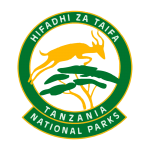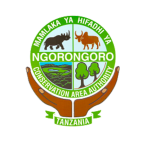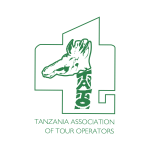
TANZANIA
Tanzania truly is a travel destination unmatched in terms of stunning landscapes and prolific wildlife. The statistics speak for themselves – an unparalleled one quarter of its land surface has been set aside for conservation purposes, with the world renowned Serengeti National Park and the vast Selous Game Reserve heading a rich mosaic of protected area that collectively harbour an estimated 20 percent of Africa’s large mammal population.


Tanzania
Amazing Facts about Tanzania
Tanzania truly is a travel destination unmatched in terms of stunning landscapes and prolific wildlife. The statistics speak for themselves – an unparalleled one quarter of its land surface has been set aside for conservation purposes, with the world renowned Serengeti National Park and the vast Selous Game Reserve heading a rich mosaic of protected area that collectively harbour an estimated 20 percent of Africa’s large mammal population.
Mount Kilimajaro and Mount Meru, the highest and fifth highest peaks on the African continent. There are lakes Victoria, Tanganyika and Nyasa, the three largest freshwater bodies in Africa. Then, of course, there is the magical spice islands of Zanzibar, the highlight of a vast Indian Ocean coastline studded with postcard perfect beaches, stunning offshore diving sites and mysterious mediaeval ruins.
General Information
Most camps, lodges or hotels in Tanzania cater specifically to tourists and serve Western-style food, ranging in standard, but generally are excellent. Game lodges tend to offer a daily set menu with a limited selection, so it is advisable to have your tour operator specify in advance if you are a vegetarian or have other specific dietary requirements. First-time visitors to Africa might take note that most game lodges in and around the national parks have isolated locations, and driving within the parks is neither permitted nor advisable after dark, so that there is no realistic alternative to eating at your lodge.
Tap water in Tanzania is generally not safe to drink, and most travellers try to stick to mineral water. Filtered and bottled water can be difficult to find you are travelling outside of main town and so it is advisable to stock up. Most camps, lodges and hotels have bottled water readily available.
Climate
Although Tanzania lies close to the Equator, the climate is healthy and generally agreeable due to altitude – it is the coastal zones, which have what can truly be described as a tropical climate. There is plenty of clear sunshine all year round. Much of the terrain is above 1,500 metres and here the climate, although warm by day is often chilly at night. The ‘long rains’ usually fall in the months of April and May.
The migration usually takes place after the long rains, when from August to October the wildebeest migrate from Tanzania into Kenya to find new grazing. During the months of October and November, there are occasional scattered rains, the ‘short rains’, which freshen the atmosphere and vegetation and lay the dust.
Just south of the equator, Tanzania is huge and its sheer size means that the climate varies considerably within it. However, generally the main rainy season, or the ‘long rains’, lasts during April and May. Afternoon tropical downpours are the norm – which are heavier and more predictable beside the coast and on the islands. The humidity is high and daily temperatures reach the low-mid 30°s.
The long dry season lasts throughout June, July, August, September and October is when rainfall is unusual, even on the islands. Temperatures vary hugely with altitude and location, but it’s usually a fine, clear sky and sunny weather – it’s a great time to visit Tanzania. During November and December there’s another rainy season: the ‘short rains’. These are much lighter than the main rains and less reliable.
If it has rained during the short rains, then it normally dries up for a few months, January and February, which is Tanzania’s ‘short dry season’, before starting to rain again in earnest at the end of March.
Currency and banks
Currency
In Tanzania, the unit of currency is the Tanzanian Shilling, which is divided into 100 Cents. Notes are issued in denominations of 500, 1000, 2000, 5000, and 10000 Shillings. Coins are issued in denominations of 50, 100 and 200 Shillings.
Banking
Banks are open from 9:00am to 3:00pm Monday to Friday. Many banks are equipped with 24 hour ATM machines.
Credit cards and travellers checks are not widely accepted in Tanzania. Where they are accepted can high service fees and poor exchange rates be expected. Major foreign currencies – particularly US $ – are accepted in Tanzania and are convertible at banks and bureau de changes in the main towns and tourist areas. If bringing cash in US $, please make sure bank notes are in good condition, with no cuts or damage and are not older than 2004. Most banks offer higher exchange rates for US $ 100 / US $ 50 bank notes compared to US $ 20 / US $ 10 or US $ 5 bank notes.
Electricity
The electricity supply in Tanzania is 220/240 volts at 50Hz. Plugs are 3 point square (UK Type). Adapters are available at major airports.
Some lodges and camps only have power in the early mornings and evenings. Batteries may be recharged in camps during the day but it is wise to double check with the camp manager.
As the sockets can vary a ‘Travellers Adaptor Set’ is always recommended. Voltage sometimes fluctuates and whilst power cuts are rare, they are not unknown. It is useful to carry a torch.
Staying Healthy
Health requirements vary from country to country. We recommend you speak to your local Travel Doctor for up-to-date information and advice. The following information is to be used as a guide only.
Malaria: It is recommended that precautions against malaria are taken for travel to most regions in Africa. We suggest you contact your doctor for advice on which prophylactic is recommended.
Yellow Fever: A Yellow Fever vaccination is required. All travellers must carry proof that the Yellow Fever vaccine has been administered at least 10 days prior to travel.
Food and Water
Most camps, lodges or hotels cater specifically to tourists and serve Western-style food, ranging in standard, but generally are excellent. Game lodges tend to offer a daily set menu with a limited selection, so it is advisable to have your tour operator specify in advance if you are a vegetarian or have other specific dietary requirements. First-time visitors to Africa might take note that most game lodges in and around the national parks have isolated locations, and driving within the parks is neither permitted nor advisable after dark, so that there is no realistic alternative to eating at your lodge.
Tap water in Tanzania is generally not safe to drink, and most travellers try to stick to mineral water. Filtered and bottled water can be difficult to find you are travelling outside of main town and so it is advisable to stock up. Most camps, lodges and hotels have bottled water readily available.
Dress Recommendations
It never gets really cold in Tanzania so lightweight clothing, preferably cotton or linen, is recommended. While on a game viewing safari, avoid brightly coloured clothing, stick to whites, beiges, khakis and browns. There may be long days sitting in safari vehicles, so it is advisable to wear light comfortable clothing such as short sleeved shirts and cotton/linen trousers or shorts. Denim will become too hot and extremely uncomfortable. Walking shoes and socks will be required.
The evenings will be chilly, so long sleeved shirts and trousers should be worn. A sweater may be needed. These will also prevent you being bitten by insects. A hat should be worn at all times outside. The sun may sometimes not feel hot, but it can still easily burn, especially if it is cloudy and overcast.
If visiting Zanzibar or any coastal town don’t forget to take a swimsuit, as it is invariably warm. Ladies are recommended to take cotton skirts, blouses and dresses. Sandals are a must for this environment! On the beaches and within the confines of hotels, normal swimwear is acceptable but nudity is not.
As over a third of the population in Tanzania is Muslim, it is therefore not etiquette for ladies to walk around in public displaying their legs and shoulders. Remember to dress modestly as short shorts, miniskirts, vests and tank tops will be frowned upon.
Getting around in Tanzania
If you are visiting a number of parks and reserves in Tanzania, you can either drive or fly between them. Roads in most of the wilderness areas are in poor condition and unmarked, and self-driving is not recommended. Operators will supply you with a driver who doubles as an informal guide; alternatively, you can arrange to fly to your destination and utilize a car and driver supplied by the lodgings. Elsewhere in Tanzania, towns and cities are linked by a steady stream of buses and dala-dalas (minibuses), and in the cities, there is public transport in the way of buses, dala-dalas, taxis, and, in some places, bicycles or tuk-tuks.
Precision Air run regular services, mostly via Dar es Salaam, Kilimanjaro or Zanzibar, to all main towns and other destinations in East Africa and beyond. All national parks and some of the top-end luxury lodges have airstrips and Coastal Air operates between these and the main airports on the mainland and the islands of Zanzibar, Pemba and Mafia. ZanAir has frequent connections between Zanzibar, Pemba and the mainland.
Driving is on the left hand side of the road
Entry Visa Requirements
A holiday visa for Tanzania is required for Foreign Passport Holders. The visa can be obtained on arrival at the airport or at border posts. Tanzania now also has an E-Visa Portal so travellers can apply prior to travel to speed entry on arrival
https://eservices.immigration.go.tz/visa/
The current visa price for most foreign passport holders is below:
Single Entry Visa: USD $50 per person on an Foreign Passport (subject to change).
Passport holders from USA will incur a fee of USD $100 entry fee.
It is strongly advised to review your particular visa requirements on your government websites before travel to Tanzania.
Please note that all travellers must have a valid passport with a minimum of 6 months validity left on the passport at the time of entry.
SERENGETI
NATIONAL PARK
NGORONGORO CRATER
CONSERVATION AREA
TARANGIRE
NATIONAL PARK
ARUSHA
NATIONAL PARK
Lake Manyara
NATIONAL PARK

southern circuit NATIONAL PARKS
Tanzania national parks and attractions
ruaha
NATIONAL PARK
UDZUNGWA
NATIONAL PARK
sELOUS
Game REserve
MIKUMI
NATIONAL PARK

western circuit NATIONAL PARKS
Tanzania national parks and attractions
GOMBE STREAM
NATIONAL PARK
katavi
national park
RUBONDO ISLAND
national park
mahale mountains
national park

eastern circuit NATIONAL PARKS
Tanzania national parks and attractions
ZANZIBAR
ISLAND
PEMBA
ISLAND
MAFIA
ISLAND

Follow us
Lorem ipsum dolor sit amet, consectetur adipiscing elit. Ut elit tellus, luctus nec ullamcorper mattis, pulvinar dapibus leo.







